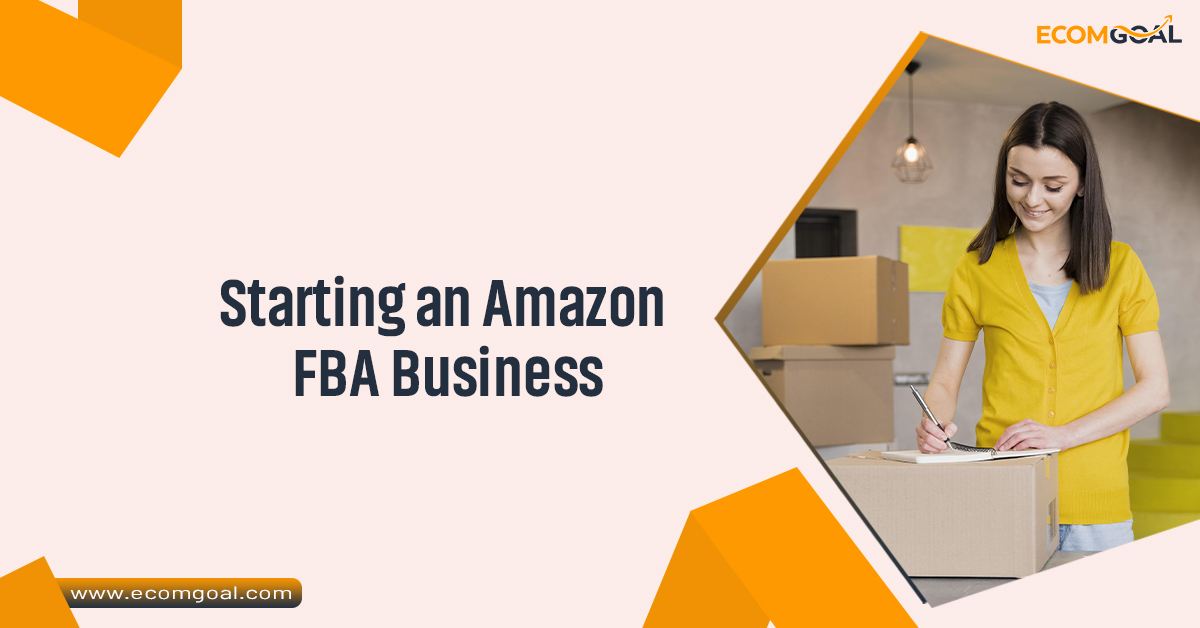
If you’re thinking about building a side hustle — or even a full-time income — in 2025, there’s one opportunity that continues to stand strong: Amazon FBA. With millions of shoppers visiting Amazon daily and e-commerce growing faster than ever, it’s no surprise that many entrepreneurs are still turning to Amazon’s Fulfillment by Amazon (FBA) program to build real businesses.
But how do you actually start? And what’s different about starting an Amazon FBA business in 2025 compared to years past? Let’s break it all down step-by-step.
What is Amazon FBA?
To start, FBA stands for Fulfillment by Amazon. It’s a service where you send your products to Amazon’s warehouses, and they handle all the heavy lifting: storage, packing, shipping, customer service, and even returns.
That means you don’t have to worry about stuffing boxes in your garage or running to the post office every day. Instead, you focus on finding products, marketing, & growing your brand.
The best part? Amazon’s reputation for fast, reliable shipping (think Prime two-day delivery) automatically gives your products a boost in customer trust.
Why Starting an Amazon FBA Business in 2025?
The landscape has changed — but in many ways, it’s better than ever for new sellers:
- Global E-commerce Expansion: Online shopping is booming worldwide. With its ongoing expansion into new markets, Amazon is unlocking more opportunities.
- AI Tools: In 2025, AI-powered product research and advertising tools make it easier to find winning products and optimize your campaigns.
- Growing Niche Markets: Micro-niches are thriving. You don’t need to compete with big brands — finding a small but passionate audience can be more profitable.
- Low Entry Barriers: While competition exists, starting costs are still manageable, and you can scale at your own pace.
How to Starting an Amazon FBA Business 2025: Step-by-Step Guide
Here are 7 steps to guide starting an Amazon FBA business in 2025
Step 1: Choose Your Business Model
Before jumping into product research, you need to pick your strategy. Common Amazon FBA business models include:
- Private Label: Creating your own branded products. Higher startup costs but bigger rewards.
- Wholesale: Buying bulk from established brands and reselling.
- Retail Arbitrage: Buying products at a discount in stores & selling them for a profit on Amazon.
- Online Arbitrage: Same as retail arbitrage but sourcing products online.
- Dropshipping: Listing products you don’t physically hold, but having suppliers ship directly to customers.
In 2025, private label and wholesale remain the most sustainable options for building long-term brands.
Step 2: Product Research
Product research is the heart of FBA success. Your goal is to identify a product that is:
- In demand
- Has manageable competition
- Can be sold at a profitable margin
Modern tools like Helium 10, Jungle Scout, and AI-driven data analyzers make product research smarter and faster in 2025.
Tips for choosing a product:
- Look for evergreen items (products that sell year-round).
- Avoid fragile, heavy, or complicated items (higher shipping and return risks).
- Small enhancements can make a difference (look at competitor reviews to spot frequent complaints you can fix).
Example: Instead of launching just another yoga mat, create an eco-friendly yoga mat with better grip and a carrying strap included.
Step 3: Find a Supplier
After finalizing your product idea, the next step is finding a manufacturer. Most sellers still source products from Alibaba or global sourcing fairs.
Key steps:
- Order multiple samples.
- Compare quality and communication.
- Negotiate pricing and terms.
- Verify certifications and production capabilities.
Pro Tip: In 2025, numerous entrepreneurs are leveraging AI tools to create supplier contracts and manage quality control remotely using smart inspections.
Step 4: Create Your Amazon Seller Account
Creating your Amazon Seller Central account is a straightforward task:
- Access Amazon Seller Central & choose the “Sign Up” option.
- Choose your selling plan: Individual (pay-per-sale) or Professional (monthly subscription, recommended if you plan to scale).
- Enter the required business details: legal name, tax information, and bank account details.
Important 2025 Update: Amazon is now enforcing stricter identity verification procedures. Make sure you’re ready to provide clear business documents and participate in a video verification call.
Step 5: Build a High-Converting Listing
You could have the best product in the world, but if your listing stinks, you won’t sell much.
In 2025, Amazon’s A10 algorithm rewards listings that:
- Convert visitors into buyers
- Have strong keywords naturally embedded
- Feature high-quality images and videos
- Receive consistent positive reviews
Make sure your listing includes:
- An irresistible title packed with keywords
- Bullet points highlighting key benefits (not just features)
- A strong product description (you might also use Amazon’s Enhanced Brand Content/A+ Content if you qualify).
- Professional photos (ideally showing the product in use)
Investing in AI-powered listing optimization services can also give you an edge.
Step 6: Launch and Market Your Product
Gone are the days when you could throw a product on Amazon and wait for sales to pour in. A smart launch strategy is crucial.
In 2025, here’s how smart sellers launch:
- Amazon PPC Ads: Start sponsored ads to get early traction.
- External Traffic: Drive visitors from social media, Google ads, influencers, and email lists.
- Early Review Programs: Use Amazon’s Vine Program (if eligible) or set up compliant follow-up email sequences to encourage reviews.
Tip: Consider a small launch discount to accelerate sales velocity and increase your product ranking.
Step 7: Scale Your Business
Once your first product is selling consistently, it’s time to think about scaling.
Options include:
- Launching complementary products (build a brand around a niche)
- Expanding to international Amazon marketplaces (like Amazon Canada, UK, Europe)
- Setting up a Shopify store and integrating Amazon’s Multi-Channel Fulfillment.
AI automation, better inventory tools, and 3PL services in 2025 make scaling smoother than ever.
Final Thoughts
Starting an Amazon FBA business in 2025 is still one of the best ways to achieve financial independence, but it’s not a “get rich quick” scheme. Success in this requires patience, a thoughtful strategy, and a commitment to learning..
The good news? With all the new tools and global market opportunities available today, there has never been a better time to start — if you’re willing to put in the work.

Hello, I am an E-commerce Expert with extensive experience providing services to numerous e-commerce brands and individuals since 2017. My primary areas of expertise include the Amazon, Walmart, and Shopify marketplaces. Linkedin
